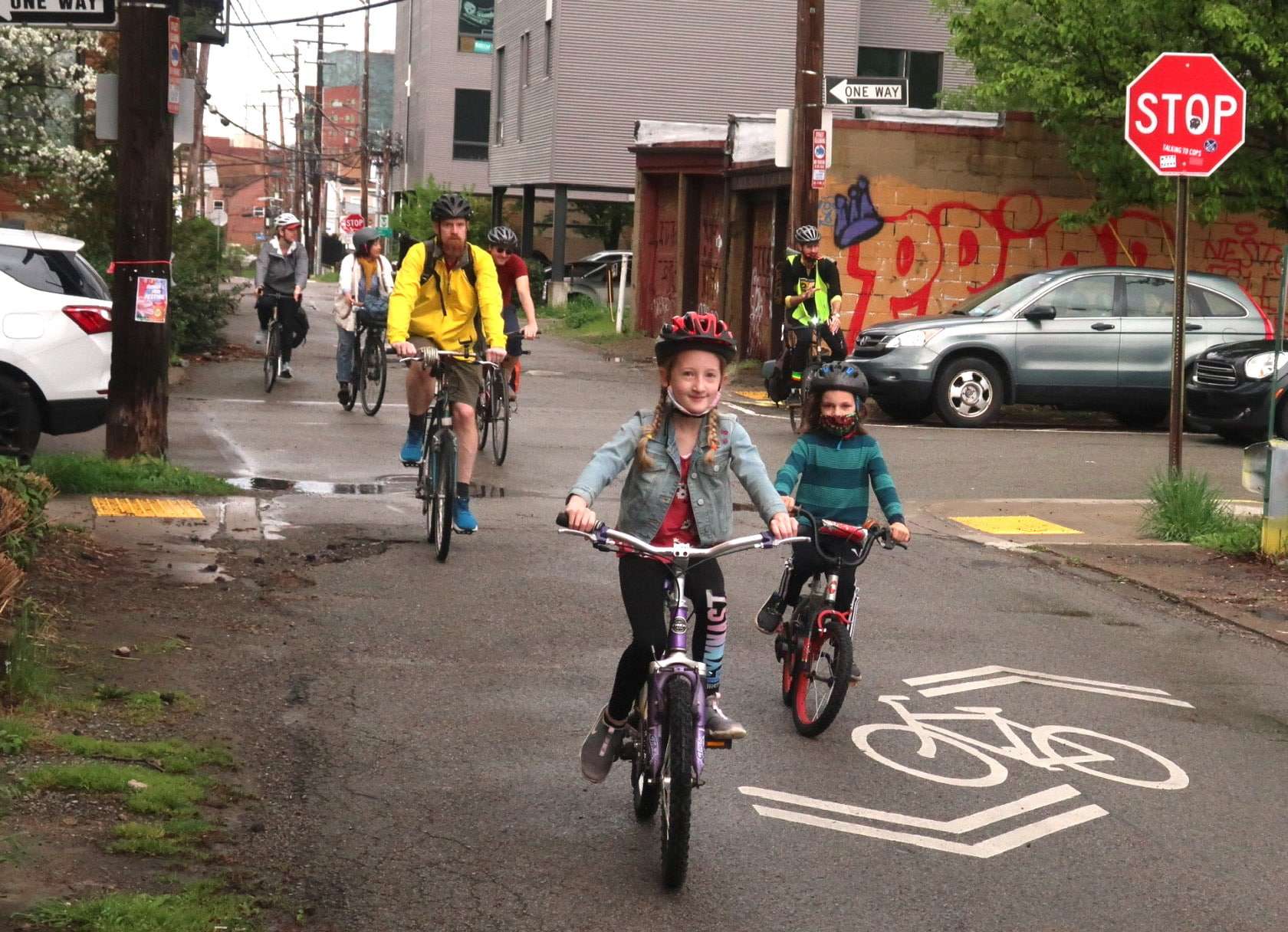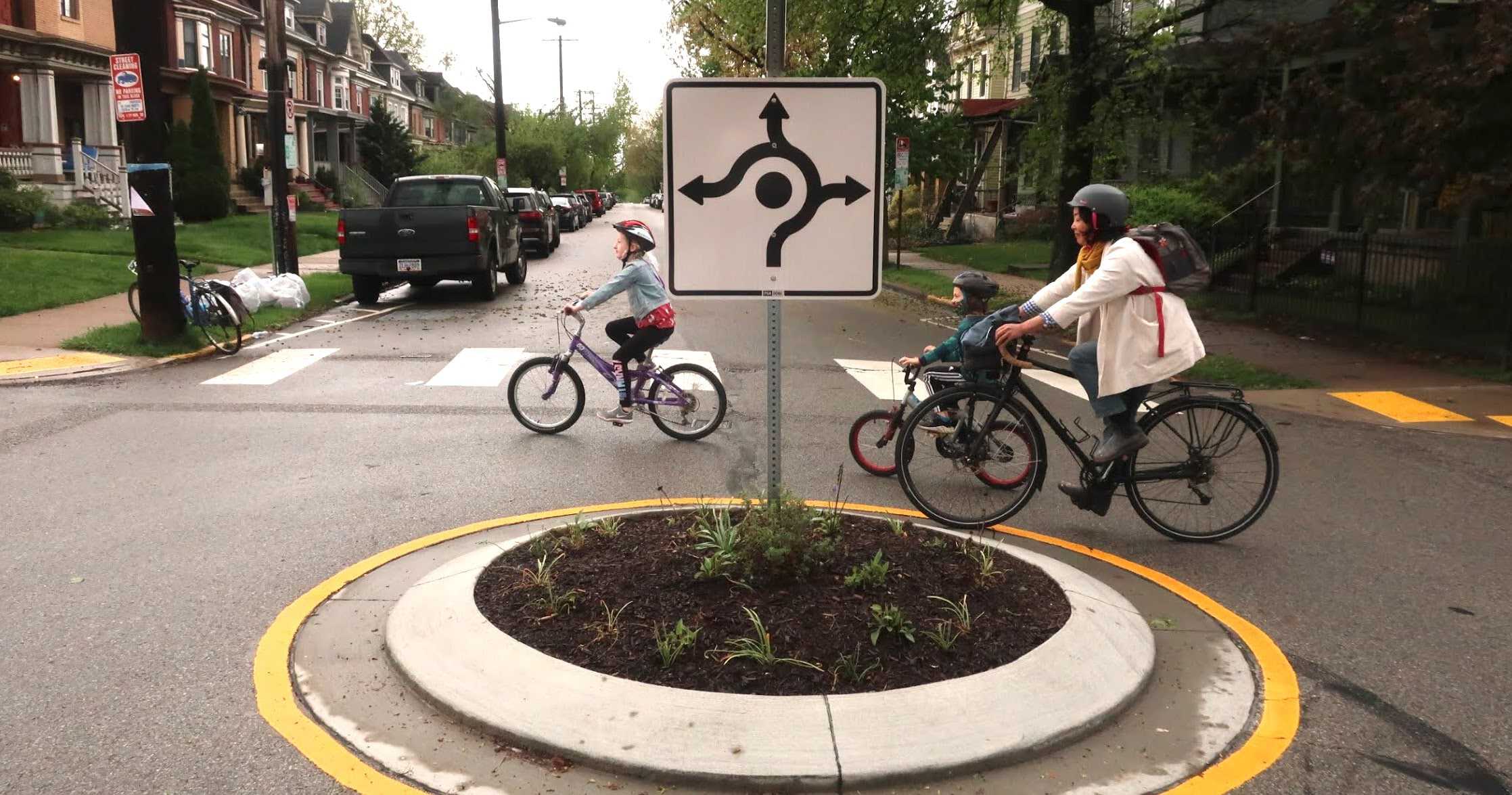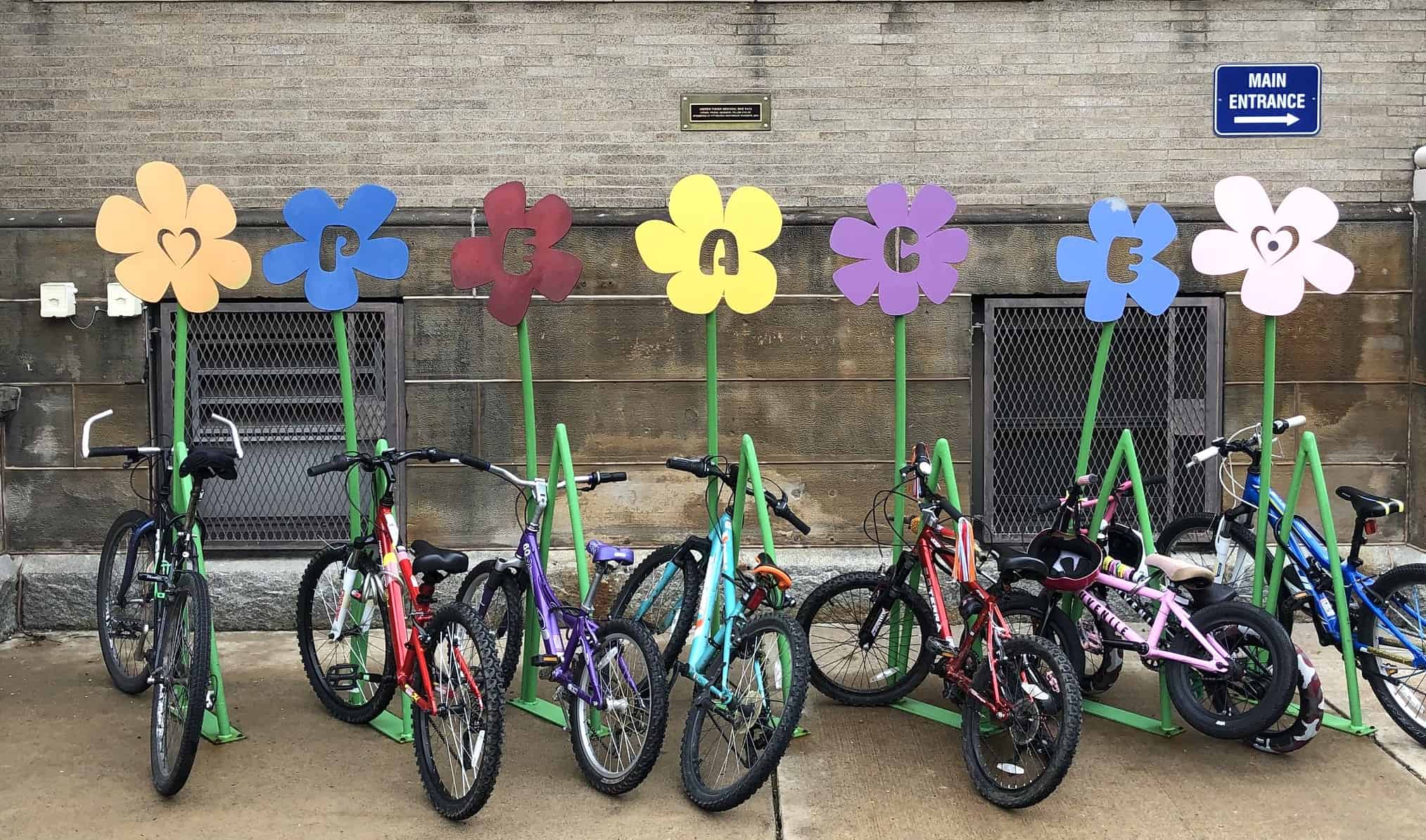
A Guide to Biking and Walking to School with Kids of All Ages
Every year Bike and Roll to School Day promotes active transportation and safe routes to school across the country. Here in Pittsburgh, schools celebrated the occasion with Bike Trains and Walking School buses to encourage active transportation in a safe, visible, and fun way!
This year, BikePGH helped to plan a Bike Train and Walking School bus with staff and families at Pittsburgh Montessori K-5 School and The Environmental Charter Intermediate School, with help from our friends from Pittsburgh Major Taylor Cycling Club and The Wheel Mill. Both schools are located in neighborhoods with high bike traffic and access to consistent bike and pedestrian infrastructure. Access to such infrastructure is a key component to the success of a bike train. If your neighborhood lacks such bicycle infrastructure, consider advocating for Safe Routes to School around your own school community by connecting with Pittsburgh DOMI’s Safe Routes to School Office and joining a Neighborhood Bike Pedestrian Committee.
ℹ️ Here are some of our tips and recommendations to organize a Bike Train or Walking School Bus in your own school community:
What is a Bike Train and a Walking School Bus?

Simply put, a Bike Train or Walking School Bus is a group of students either biking or walking (and rolling!) to school together. By traveling together, students are more visible, have safety in numbers, and can be guided by only a handful of adult leaders. Adult leaders may be parents, volunteers from the community, or school staff. Bike Train leaders should be competent cyclists who can set an example to students by riding safely, setting an appropriate pace, and making sure to safely cross their train at intersections. While both groups can use the sidewalk, older and more experienced Bike Train students may be able to use roadways particularly if there are bike lanes, Neighborways, or other bike facilities available.
If this is your first Bike Train or if there are new students, have the group meet early in order to conduct ABC quick checks on bikes, pump tires, adjust helmets, and go over expectations for safe and courteous riding. Snacks, water, and sunscreen are never a bad idea either! Set the expectation that your Bike Train will be traveling at a relaxed pace (not a race) and will be single-file or two-abreast for more experienced riders.
The Roles of Adult Leaders

Adult leaders are integral to the Bike Train, they may be parents or volunteers from the community with clearances for working with children as required by the school. The two most important roles for adult leaders in the Bike Train are the Conductor and Caboose. The Conductor must know the route, set the pace so as not to break up the group, obey traffic laws, and stop when appropriate to regroup. The Caboose must also know the route but stays in the rear of the train behind all the students. The Caboose must be able to help students in the event of a flat, mechanical breakdown, crash, or another incident. The Caboose should have a first aid kit and tools, but it doesn’t hurt for other leaders to carry them as well.
The last adult leader role are the Intersectors. Intersectors help to usher the ride through intersections, if the ride gets split up at an intersection an Intersector may become a Conductor and lead their group until regrouping. For this reason, all adult leaders should know the route and have each other’s phone numbers. Aim for a 5:1 student to adult ratio on any Bike Train. Older students who are experienced with the Bike Train may take on co-leader roles.
- Conductor Role:
- know the route
- set the pace
- obey traffic laws
- stop to regroup
- Caboose Role:
- stay in the rear
- know the route
- act as mechanic
- first aid
- Intersector Role:
- usher through intersections
- act as Conductor if the pack gets split
- help regroup the pack
A Walking School Bus requires fewer adult leaders and has fewer roles. In this case, adults can lead from behind in order to monitor students on the bus. Carrying first aid, snacks, and water is not a bad idea as well.
Where Should The Bike Train and Walking School Bus Meet and What Route Should They Take to School?

School communities may be tempted to find routes to serve every neighborhood around a school, but in practice it helps to start with a neighborhood with a high number of walkers and bikers and safe bike and pedestrian infrastructure (what a coincidence!).
Planning a route that is safe, short (a mile or less), and pleasant (lots of shade, trees, and off-street bike and pedestrian facilities) will help to guarantee success and encourage repetition. A public park, library, church, or a friendly business (like a bike shop!) can be an excellent place to meet up. It’s ok if some students may need to be dropped off at the meeting place as this enables them to still bike or walk to school, and it may reduce the length of their car trip and reduce congestion in the school zone. Software such as RideWithGPS is a great tool for building routes, sharing digitally, and printing cue sheets.
Lastly, make sure to pre-ride or walk the route without students (ideally during school arrival and departure times) beforehand noting any construction, traffic, or safety concerns that may require a reroute (this is also a great opportunity to 311 concerns to the city!).
What to Do When Arriving at School

The Walking School Bus has no added concerns when it arrives at school, but a Bike Train requires some preplanning and preparation:
- Alert School Administration: Make sure the school administration is aware of when the Bike Train will be arriving and how many riders to expect so that it will have space at an outdoor bike rack or indoors to store all of the bicycles that will be arriving.
- Bike Storage & Locking Up: If bikes are stored outside unsecured, make sure that all participants have locks or bring a cable and lock to secure multiple bikes. A combination lock at the school with a combination known by other participants and administrators is a great idea in case of early dismissals.
- Arrive Early: Consider arriving early or bringing your bike train into a separate entrance so as not to get caught up in arrival traffic. Students may also need to walk bikes as they enter school grounds because of foot traffic at arrival times.
Keep it Rolling!

Congratulations on a successful Walking School Bus and Bike Train! Now what? This is a good opportunity to make adjustments based on what worked and what didn’t. Once your route is dialed in, work with the other parents and adult leaders to set a regular schedule. Create an email, text, or Slack contact group to organize with other parents and leaders. Use your contact group to plan trains and buses and to cancel or postpone for inclement weather. Feel free to rotate the adult leader roles so that the train can keep rolling in case any of the individual leaders can not attend. Lastly, make it fun: bring a speaker and play some tunes, wear costumes, sing songs, and make it a special occasion!
🎒📚✏️ Remember: Kids who have fun going to school want to keep going to school!
